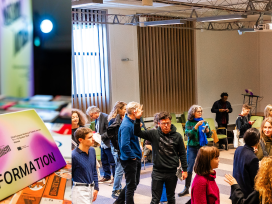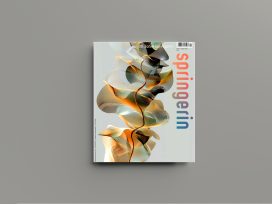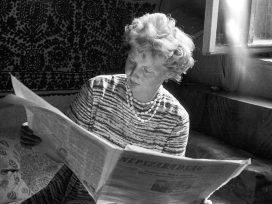The overall economic conditions for publishing a printed journal in Sweden have, in fact, not changed much since the desktop revolution in the Nineties. What has changed is that it’s much harder to get public funding from the outset: you have to prove that you can produce a journal without any support, and only until after you have demonstrated that ability can you actually get some sort of financial assistance. In more concrete terms: you have to put out four issues before you can apply for government support.
Financing European cultural journals
Like other types of cultural organization reliant on public funds, cultural journals throughout Europe have felt the impact of recession. In addition to funding cuts, journals are also having to negotiate the upheavals taking place in the print sector.
Through a European survey of financing for cultural journals, Eurozine takes stock of the situation of the network, in order to communicate its experiences internally and to others who hold a stake in European cultural policy today. [more]
Read the statements here:
Varlik, Turkey
Ord&Bild and Glänta, Sweden
Vikerkaar, Estonia
Wespennest, Austria
Sodobnost, Slovenia
Host, Czech Republic
Res Publica Nowa, Poland
Mute, UK
Intellectum, Greece
Blätter für deutsche und internationale Politik, Germany
The main part of the budgets of
Glänta and
Ord&Bild – something like two-thirds – comes from the Swedish Arts Council. The rest is sales; we rarely receive payment for ads. According to another way of calculating, however, a major part of the budget actually derives from voluntary or, in the name of professionalization, lousily paid work.
In 1965 a financial support system for the printed press was introduced in Sweden. The reason for this was to ensure a diversity of print media and to avoid the risk that in some parts of the country, where before you had a number of newspapers, you ended up with only one. Since then, subsidies have been given to newspapers that have a competitor with a higher circulation in their city of publication. Economic support for culture magazines, introduced in 1966, was based on the same principle: to cultivate diversity. Since 1974, support has been administered by the Swedish Arts Council.
The Swedish Arts Council gives support to around 100 print journals annually. The total sum of this support is barely two million euro and has stayed the same (disregarding inflation) for a long time, as long as we can remember, even now, during the ongoing European economic crises. Support covers the expected annual loss a journal makes, a principle that doesn’t pose of problem for most journals. We re-apply for support each year, and the application is evaluated by a group of referees. The main criterion is said to be quality, but of course there are other parameters.
Many people thought that the situation would change after the 2010 elections. While in opposition, the current centre-right government coalition had indicated that support for journals would only be considered for journals that dealt with “culture” – arts, literature, etc. – and not journals dealing with “political” matters. A lot of people, including us, argued that drawing a line between arts and politics is both impossible as well as highly unproductive, even devastating. This policy change has yet to happen, however. If it does, it will probably be over the course of time, in a barely perceptible manner.
Because there is a fairly well-developed support system for cultural journals in Sweden, it is almost impossible to get grants from other public donors or private foundations. In order to be considered for a grant you have to apply for something else than making a journal. Sometimes funding requirements stipulate a certain percentage of private funding for the same project. One exception to this is the Swedish Academy, which occasionally awards grants for strictly literary projects. The majority of cultural journals in Sweden are therefore heavily dependent on governmental support.
For a few years now, the Swedish Arts Council has also supported web-based journals; in 2011 it was around 15. Changing cultural policies and support systems is clearly a slow process: after all, web publishing has been happening for the last 20 years. But for a cultural journal, media change is indeed also a slow process. Though the massive media changes we are now experiencing will definitely affect journals, the impact will be slower than it has been on newspapers and other media and it will most likely be in other – perhaps more gentle – forms.
We think that it’s important to take advantage of this slowness, since it could be said to be one of the defining features of cultural journals. But we will have to do that fast. We are trying out different platforms and strategies: Ord&Bild has introduced an application for a well-known mobile system – and Glänta is about to do the same – that gives free access to some of the content of the journal. We communicate, in a slightly new way, with readers via Facebook. So we try to make use of the strengths and specific tools that we have developed as cultural journals. Precisely what these strengths and tools are is a question that we are thinking about constantly while trying out different media forms.
Because if we don’t have an answer to that question, even a provisional one (which it inevitable will be), we will lose our sense of direction and undermine the distinctive character of the cultural journal. So from that perspective, you might say that the changing media landscape forces us to face crucial questions. One is a specific question: How can the print journal minus the print be made use of? And a general question: How are we to finance this? The first question is one we’ve been addressing for a long time: we have branched out into debates, readings, parties and so on, and Glänta also into book publishing. That way we also expand the financial basis of the journal. But regarding the second question, we are, like publishers in general, stuck for an answer.






